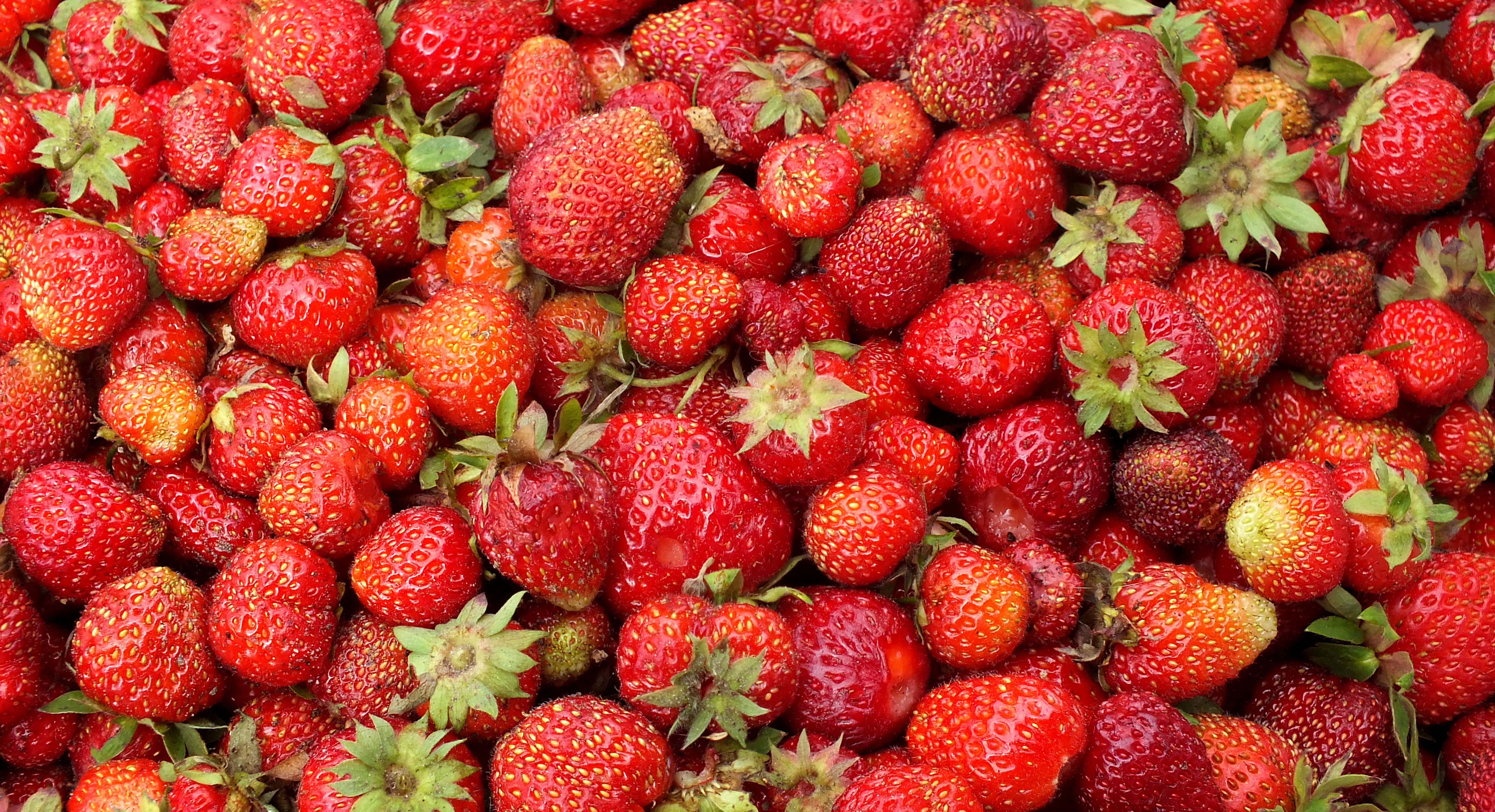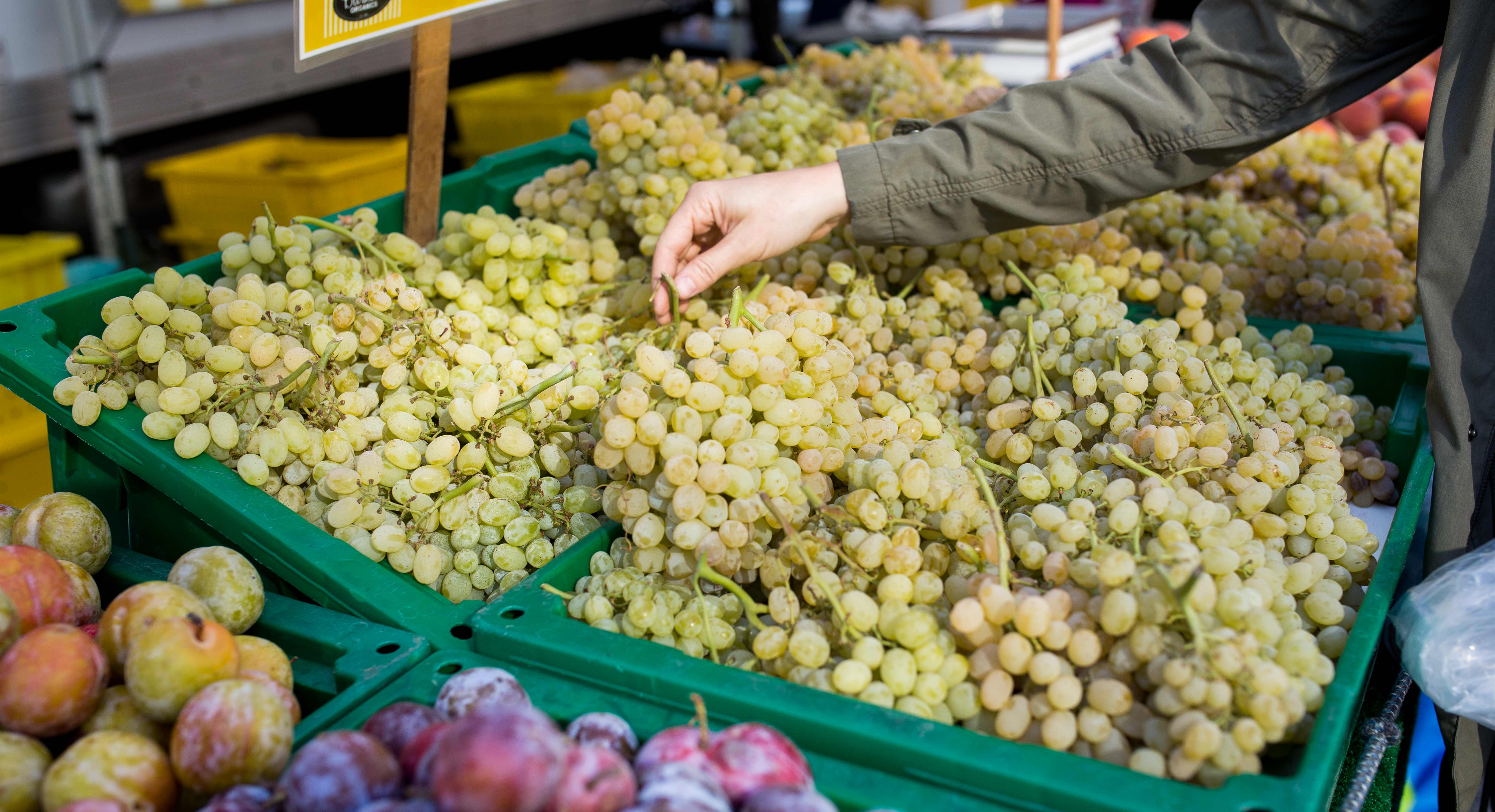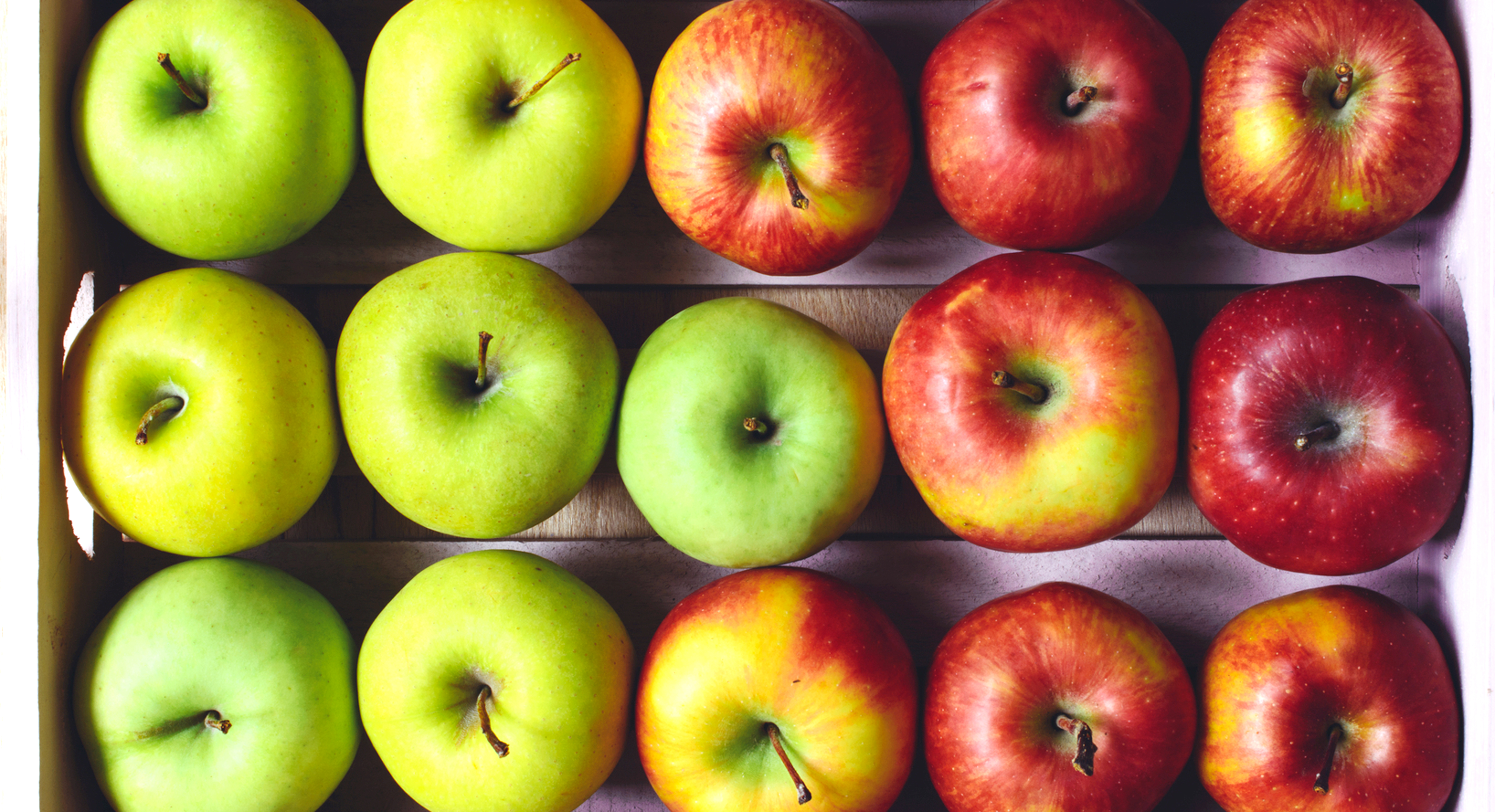Eight times a day. That’s how many times you should be eating a serving of fruits and vegetables. Nature’s bounty doesn’t only look pretty, it’s also incredibly good for you. Bu, what fruit is in season right now?
Studies have found that a diet that’s rich in veggies and fruits can have a number of different health benefits including:
- Lower blood pressure
- Reduced cancer risk
- Reduced heart disease risk
- More energy
- Better blood sugar balance
Fruits in particular are important because they deliver carbohydrates, vitamins, and minerals, and can serve as a much healthier alternative to sugary snacks (but still satisfy a sweet tooth).
However, the key is eating many different kinds of fruits and veggies of all different shapes, colors, sizes, and varieties. No one piece of produce can provide the full range of vitamins and minerals needed for a healthy lifestyle, so mix it up for the best balance and optimal nutrition.
It’s also important to eat fresh produce as much as possible. The fresher the fruit, the higher the nutritional value. A good question to ask yourself is to know if there are any fruits in season now and what nutrition they provide, and creative ways to serve them.
Winter
Believe it or not, fruits can thrive in the winter months and many are full of vitamins that can stave off contagious bugs during cold and flu season.
Bananas
Bananas are in season throughout the winter because they’re harvested in warmer climates including South America, Central America, and the Caribbean since they are spring fruit. They are great in smoothies, sliced up on top of peanut butter toast, and make a perfect portable snack with numerous health benefits [1]:
- High levels of protein, fiber, copper, potassium, and vitamin B provide dietary balance
- Many antioxidants help fight cellular damage and lower disease risk [2]
- Starches serve as soluble fiber, which helps to moderate blood sugar and keeps the digestive system healthy
- Low calories and high fiber can also help with weight loss by providing a filling snack
- Magnesium and potassium promote a healthy heart by lowering blood pressure and optimizing heart function [3]
Grapefruit
Grapefruits were first bred in the 18th century when a pomelo was crossed with an orange. They get their name from the way they grow since they’re clustered similarly to grapes. While they hail from Florida, grapefruits are also harvested throughout Texas and tropical climates, which means they can thrive in the winter. They have become more and more popular over the years as research continues to uncover all the additional health benefits they can provide, including:
- A boost to immune system function because of very high levels of vitamin C [4]
- A low glycemic index, which decreases the risk of diabetes [5] [6]
- Improved heart health due to high levels of potassium and lycopene
- Reduced chance of stroke and lowered blood pressure thanks to grapefruit’s potassium concentrations
- High fiber that leads to better digestion
- Loads of electrolytes and better hydration—grapefruit is made of 91 percent water [7]
TRY: Broiled Grapefruit with Ginger and Honey
Pears
Known for their mild, sweet flavor and fibrous meat, there are 3,000 varieties of pears worldwide, including some that actually look like apples (see the Asian pear). They thrive in cool and temperate climates like Oregon and Washington state, with a history dating back to 1000 B.C. Sometimes called butter fruit for their soft texture, they have many important positive effects.
- The low calories and increased fiber can lead to better digestion and weight loss; in fact, the high fiber content helps control diverticulitis by absorbing water and making bowel movements easier to pass [8]
- Reduced risk of heart disease. Increased fiber intake has been shown to provide better blood pressure readings and healthier cholesterol levels [9]
- High fiber foods like pears are also linked to a reduced risk of diabetes [10]
TRY: Tahini-Pear Tea Cake
Oranges
Winter is all about the vitamin C, with oranges leading the way as one of the most popular fruits (and fruit juices). But it’s important to eat the fruit raw, too, since juice is often filled with added sugars, while the fruit itself contains a huge number of vitamins and minerals. Oranges have more than 170 phytochemicals and 60-plus flavonoids, delivering huge antioxidant effects as well as other health boosts [11].
- Lower blood pressure thanks to reduced sodium coupled with high levels of potassium
- The compounds found in citrus have been shown to reduce stroke risk by as much as 19 percent [12]
- Improved heart health due to high levels of potassium, vitamin C, fiber, and choline
- Improved immune system functionality occurs with higher levels of vitamin C, and oranges have among the highest concentrations of the vitamin [13]
Spring
Springtime gives way to even more fresh fruits, as the produce that is normally out of season during the colder weather becomes more readily available. This is also when prices on fruits that are typically out of season begin to drop as they become more accessible in the market. What fruit is in season right now?
Mangos
The history of the mango dates back 5,000 years ago, when they were first grown in India. Some say Buddha used to meditate under mango trees and the fruit’s shape later inspired the popular paisley pattern, which also originated in the country.
Today, they are sourced from a number of tropical locations as well as Florida, California, and Texas, and are most in season during the spring. Mangos taste great on their own or added to salsa and lemonade—and they have a great nutritional profile, which makes them even tastier:
- Low in calories—a single cup is just 100 calories [14]
- Fully fat-free and sodium-free
- Contains more than 20 different vitamins and minerals [15]
- High levels of vitamin A, lycopene, and antioxidants, which fight off free radical damage and improve vision [16]
TRY: Sriracha Salmon Tacos with Mango Salsa
Pineapples
Pineapples are arguably one of the prettiest fruits available; their name was given by European explorers who discovered them in America and thought they had a strong resemblance to pine cones. The flowered buds on pineapples are actually a byproduct of the cluster of berries that then fuse around the core and become the juicy part we eat. It takes the fruit three years to mature, but it’s well worth the wait given all the positive benefits it offers:
- A compound known as bromelain is offered in high concentrations in the core; this important enzyme has been shown to reduce inflammation, relieve digestive issues, and can stave off cancerous tumor growth [17]
- The fruit is also filled with vitamin C, copper, folate, manganese, and many other nutrients that work to support the immune system and strengthen bones and teeth
TRY: Coconut-Pineapple Smoothie
Strawberries
Strawberries are a mystery fruit—in fact, some might say they’re not a fruit at all, but rather an enlarged receptacle of a flower that belongs to the rose family. Strawberries are the only “fruit” to wear their seeds on the outside, and nearly 200 small seeds are in every single one. They’re great for making smoothies or ice cream and other dessert recipes, which are made even sweeter by all the great health benefits:
- Good concentrations of polyphenol antioxidants and vitamin C can boost the immune system and help prevent more serious or chronic illnesses [18]
- The ellagic acid found in strawberries can also potentially prevent certain forms of cancer [19]
- Vitamin C concentrations increase collagen production, which can lead to healthier skin
- Strawberries have folate, a B vitamin that is necessary for pregnant women to take to help the development of fetuses and prevent birth defects [20]
TRY: Honey-Macerated Strawberries with Yogurt
Summer
Summertime is when there is more fruit in season, and purchasing fresh fruit is quite easy. Buying local or from farmers’ markets during this time of year is the best option for the tastiest and most nutrient-dense fruit.
Watermelon
Few things say “summer” quite like fresh watermelon. It’s a cousin to other seasonal produce like cucumbers as well as fall staples like pumpkin and squash since it has a thick outer skin. In fact, one of the first cookbooks for sale in the States in 1776 offered a recipe for pickled watermelon rinds. While watermelons are about 92 percent water, the rest of what makes up this fruit is important for your health, too [21].
- High levels of vitamins A and B6 are great for supporting eye health and providing an energy boost, respectively
- The presence of lycopene can help improve heart and cardiovascular system function [22]
- Watermelons have potassium, which is linked to reduced blood pressure and lower risk of stroke [23]
- Because it is made up of so much water, this fruit is also good for hydration—another reason why it’s so popular in the summer
TRY: Watermelon Gazpacho
Grapes
Grapes are available in more than 8,000 varieties, in colors as vast as green, red, black, yellow, pink, and purple. They are mostly native to the Americas and Europe, and are great on their own, mashed up for jellies, fermented into wine, or dried up for raisins. It’s such a usable fruit that more than 72 million tons are produced every year. The entire grape is healthy, but the skin is the healthiest part with all of these nutrients:
- Antioxidants that can prevent certain kinds of cancer
- Flavonoids that lead to improved heart health [24]
- Potassium that reduces blood pressure [25]
- Water content and soluble fiber that can promote better digestion and prevent constipation
TRY: Roasted Carrots with Concord Grapes and Feta
Kiwis
Kiwi fruit is named for where it originated, in Australia and New Zealand, but today it’s also grown in California. Its fuzzy brown skin is deceiving, because inside is a gorgeous green fruit with a heart-shaped core and tiny black seeds that are incredibly good for you. It has as much fiber as many whole grain cereals and has the best nutrient density of most popular fruits:
- Good amounts of vitamins A, K, E, and B, which promote eye health, bone health, skin health, and lots of energy
- Excellent source of copper and potassium that increases red blood cell counts and reduces the risk of stroke and heart disease [26]
- High levels of soluble and insoluble dietary fiber that regulate digestion and lower cholesterol [27]
TRY: Mango Rose Smoothie Bowl (with kiwi)
Fall
During the fall, a number of the fruits listed above are in season—in particular bananas, grapes, pears, and pineapples. But for many, fall means that one thing: apple and pumpkin season.
Apples
An apple a day is actually really good for you, and studies have found that the combination of antioxidants, flavonoids, and dietary fiber inside can lead to a wide range of health benefits [28]. There are numerous types of apples available, including tart, sweet, and crisp—all of which offer similar effects:
- A low glycemic index, which prevents diabetes and leads to better management of the condition [29] [30]
- Tons of antioxidants that reduce the risk of developing certain types of cancer and keeps skin looking its best
- Flavonoids that decrease the risk for heart disease and lead to better heart function
Pumpkins
Yes, pumpkin is a fruit [31]. It develops from a flower much like its cousin watermelon. And when you add it to traditional holiday pie or everyday smoothies, you might notice how sweet it can be. But the real reason to celebrate it is for all of its inherent nutritional values.
- Being both high in fiber and low in calories means that you can feel fuller longer, which helps you eat less and lose weight faster
- Good concentrations of vitamin A can help reduce damage to the eyes and promote stronger vision
- Pumpkin seed oil also contains a compound known as phytoestrogens, linked to lower blood pressure [32]
- Tryptophan is found in pumpkin seeds as well, which can help trigger better sleep and a more relaxed feeling overall [33]
TRY: Maple Pumpkin Pie
Figs
Figs are another fall staple, with California producing 98 percent of the fresh fig population and 100 percent of the dried variety [34]. But they actually date back to ancient times—some claim the Biblical story about Adam and Eve was actually centered around figs (and not apples), and the earliest Olympians are said to have received fig “medals.” This little fruit is also memorable in a healthy way:
- Figs have as much calcium as one-half cup of milk; this mineral is important for the health of bones and teeth [35]
- Good iron stores help with producing red blood cells and delivering oxygen and blood flow to all parts of the body, which also makes you feel energized [36]
- The presence of vitamins A, E, and K help with eye health and skin health, too
TRY: Fig and Nut Crackers
Here’s a convenient chart listing out all your favorite fruits by season so you can always ensure you’re getting the freshest picks.
Photo credit: Alicia Cho
Illustration credit: Foley Wu



